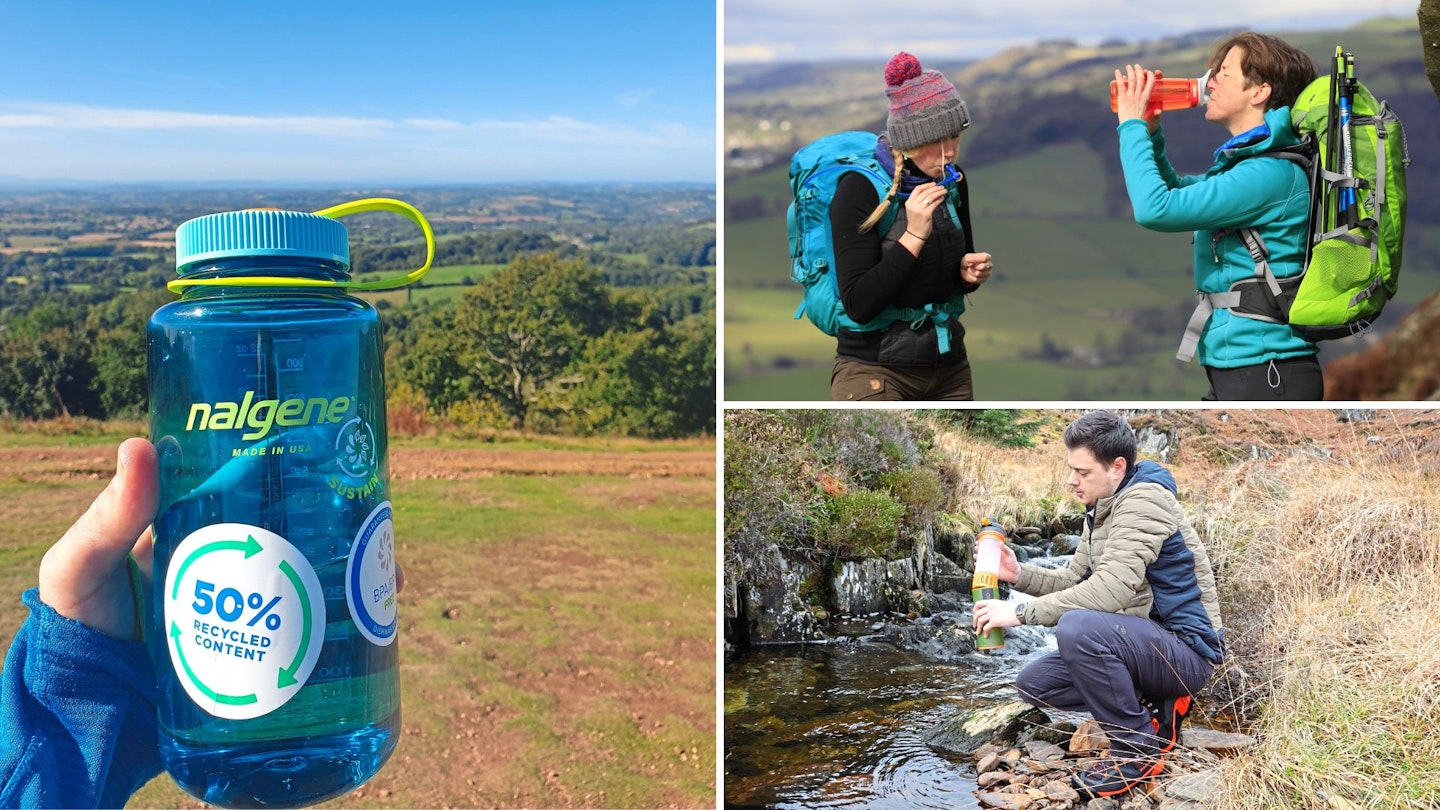Of all the accessories to take hiking, a water bottle is ground zero. It's the very first thing you need above all else.
With that firmly established, the question then evolves into which is the best water bottle? You have a few options, but like boxes of cereal at the supermarket, they're all pretty standard. However, there are a few key considerations you'll want to make when choosing a drink bottle.
These include material, durability, volume, and sustainability. Material and durability have some overlap because metal water bottles are often the most durable. However, material also influences weight too. Volume is one of the most obvious but is influenced by whether you have access to useable water sources during your trek.
Then, of course, it's important to opt for a water bottle that is made in a more sustainable way. That said, a water bottle is immediately and vastly more eco-friendly than disposable plastic bottles, so you're winning already. If it's an insulated water bottle you're after, head to our guide to the best insulated flasks.
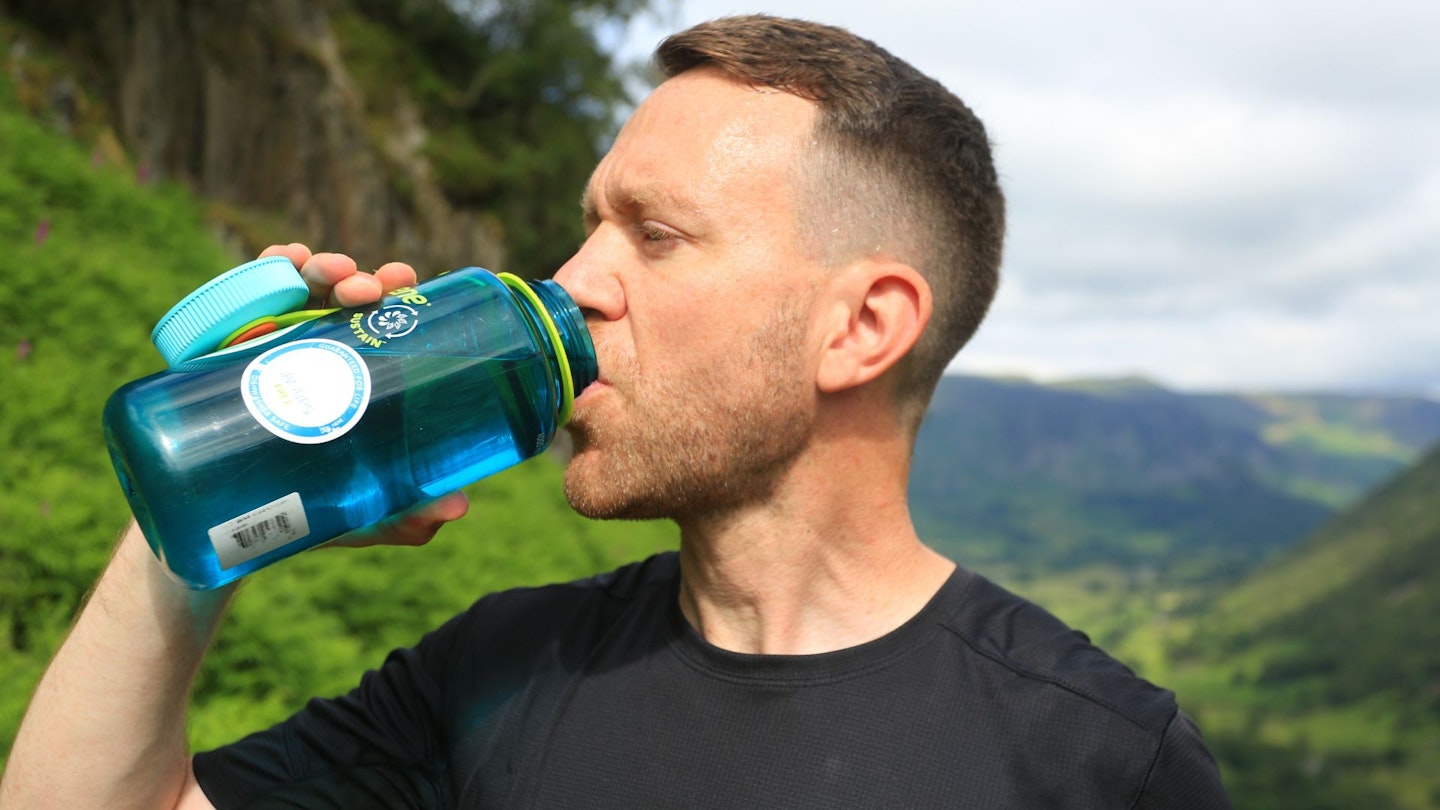
The best water bottles at a glance:
Best in Test: Sigg Water Bottle Traveller MyPlanet
Best Value: Nalgene Tritan Wide Mouth Sustain 1L
Best lightweight water bottle: LifeStraw Peak Series Collapsible Squeeze
Best filter water bottle: Grayl GeoPress Water Purifier
This is our buying guide to the best water bottles, featuring our favourite drink bottles of all kinds. There's something for everyone here.
The best water bottles in detail
Best in Test
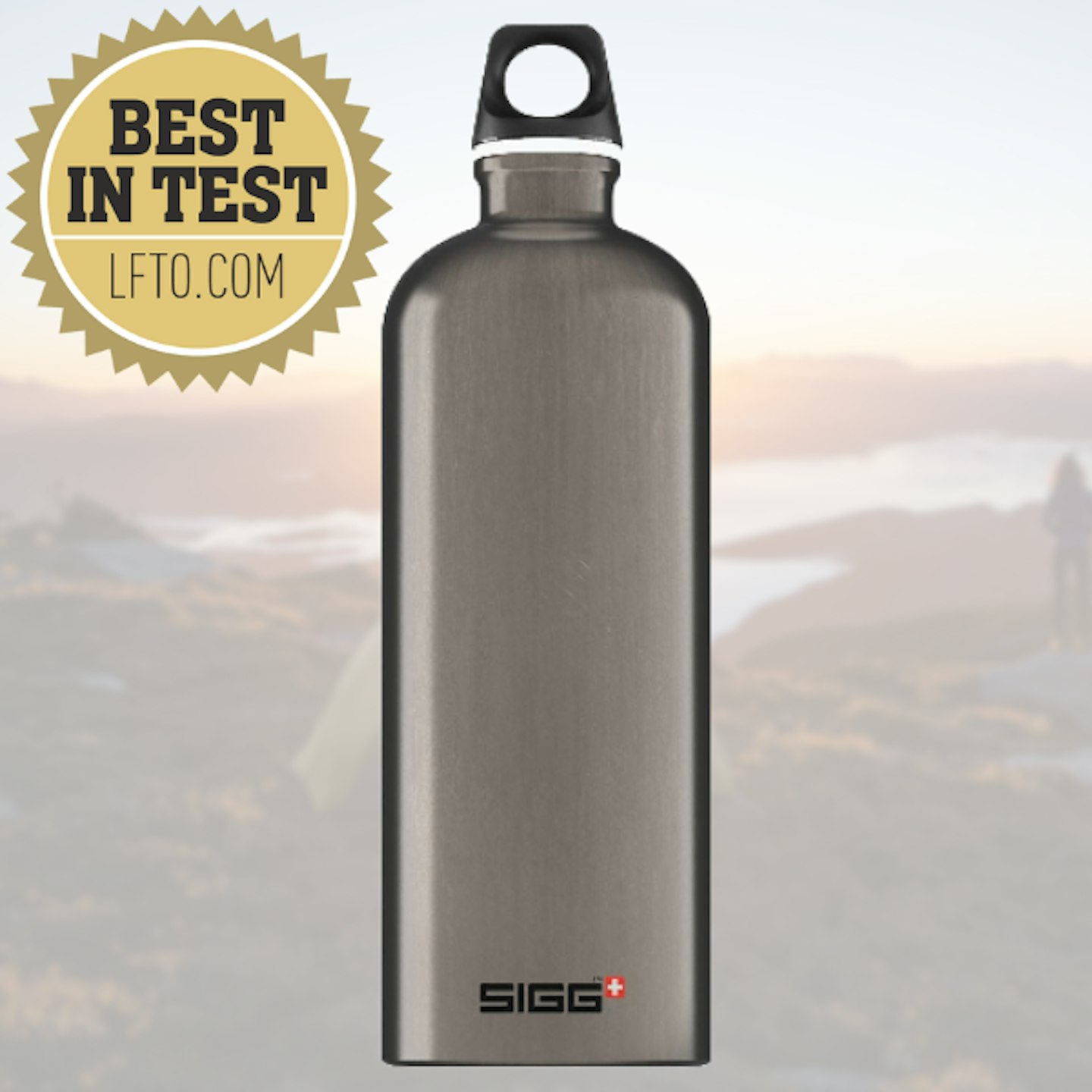
The iconic Sigg bottle is another stone-cold hiking classic. Made from aluminium (now 100% recycled aluminium created from old high voltage wiring and printing plates), it's one of the lightest bottles money can buy – just 147g.
Developed and produced in Switzerland and climate-neutral since 2022, the Traveller MyPlanet has a BPA-free interior coating that is resistant to fruit acids.
It's also leak-proof and tough; a well-used, well-aged Sigg bottle should bear the scars of its adventures with pride. And when it finally reaches the end of its life, the aluminium can be recycled again.
Pros
- Sustainable
- Tough
- Good value
- Lightweight
Cons
- Only 2 volume sizes
| Weight: | 147g (1L) |
| Materials: | 100% recycled aluminium, food-safe, BPA-free, recyclable |
| Volumes: | 600ml, 1000ml |
Best Value
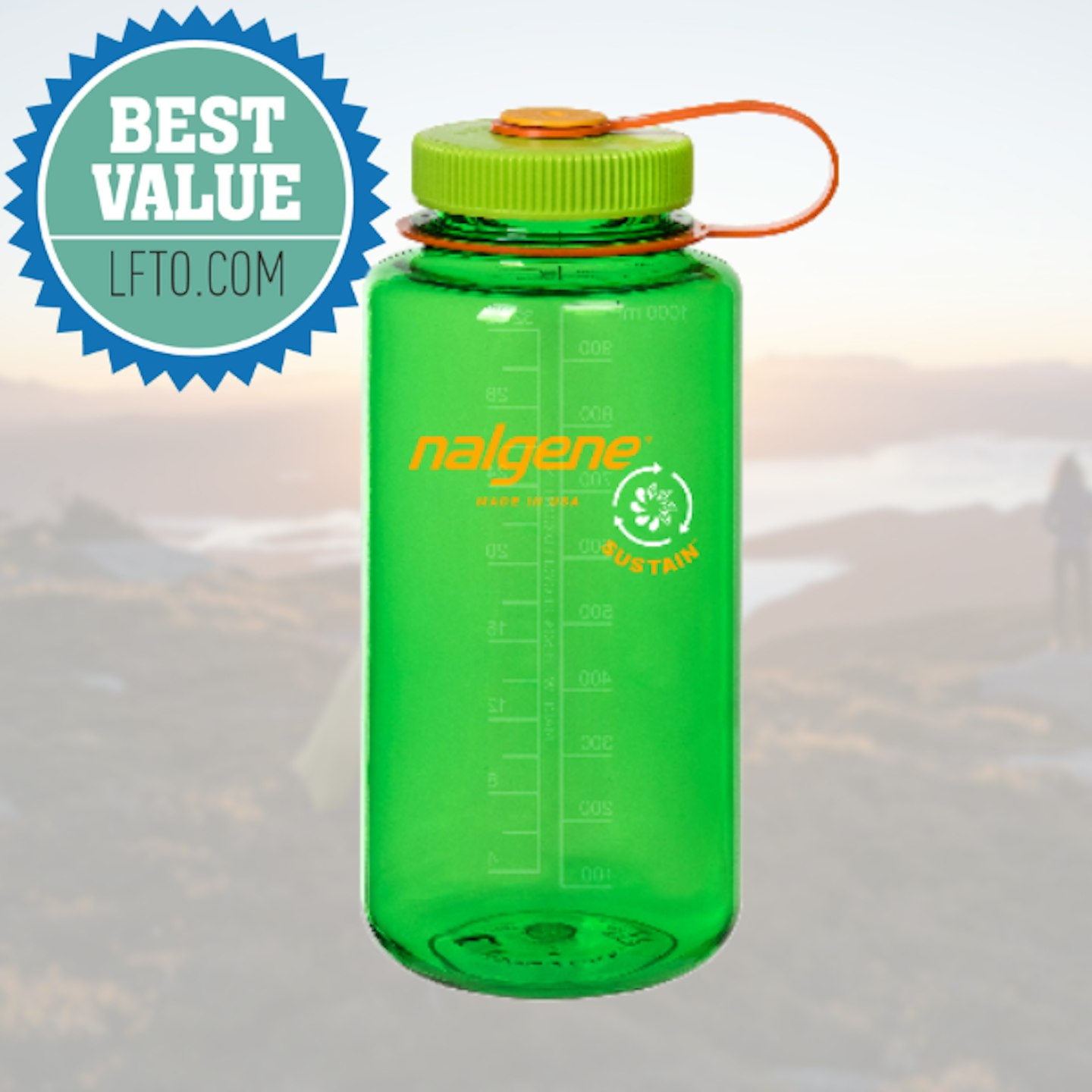
www.ellis-brigham.com
Lightweight (177g), leak-proof, free from BPA and BPS (types of harmful Bisphenol chemical), and near indestructible, the classic Nalgene bottle has become a hiking staple.
The wide mouth enables rapid gulping, easy cleaning (it's also dishwasher safe) and enables the addition of ice or fruit slices to cool or add taste.
The Sustain is made with materials derived from 50% waste plastic that would otherwise be destined for landfills, offsetting the use of fossil fuels and lowering greenhouse gas emissions. It's available in all the colours of the rainbow and a couple of shades of brown.
Pros
- Uses recycled plastic
- Tough for a plastic water bottle
- Lightweight for its volume
Cons
- You might prefer a metal drink bottle
| Weight: | 177g (946ml) |
| Materials: | Tritan Renew plastic, 50% recycled, BPA-free |
| Volumes: | 473ml, 946ml |
Best lightweight water bottle
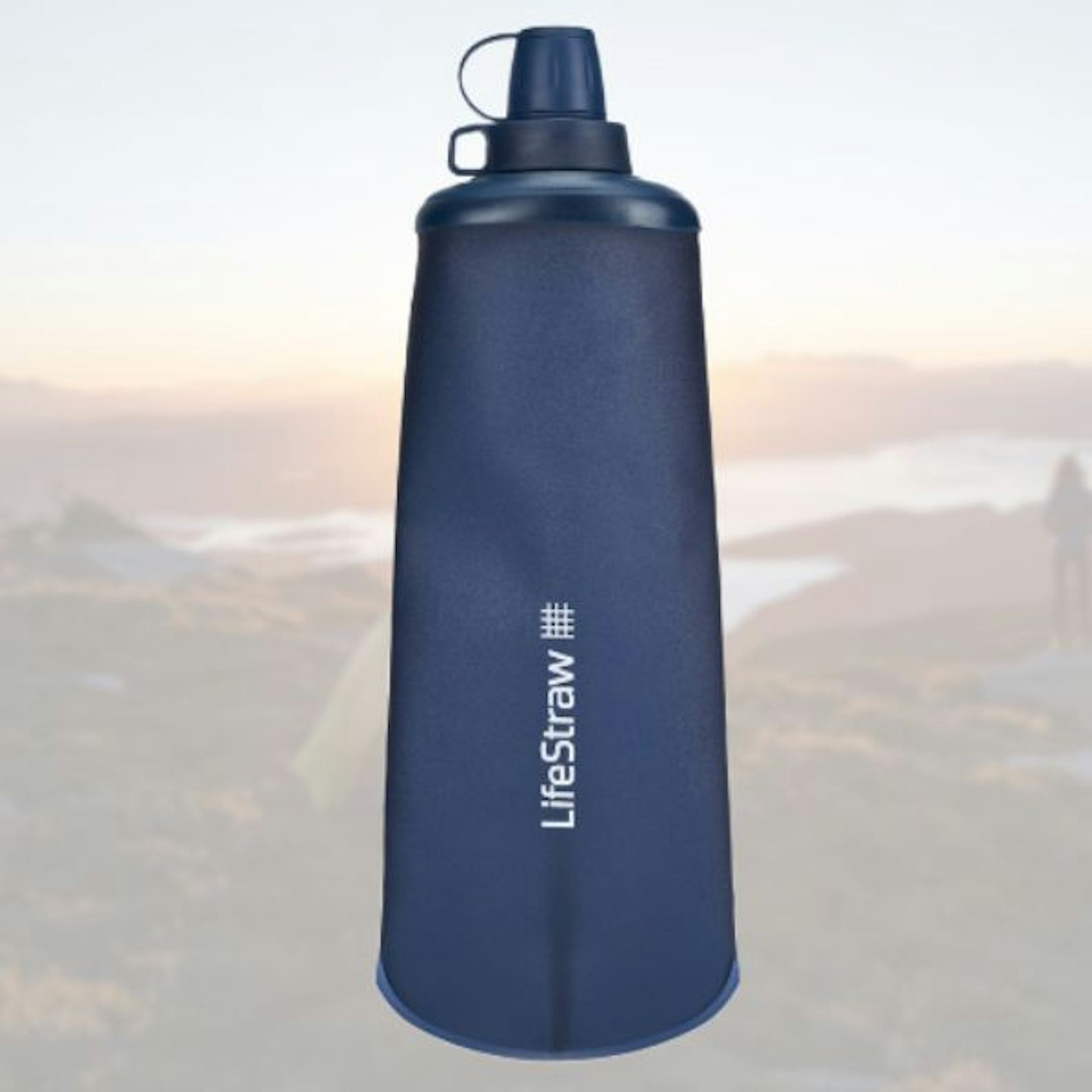
www.alpinetrek.co.uk
At a kilogram per litre, water is weighty; one way to get around that is to filter as you go. The new LifeStraw Peak comes with a soft plastic bottle and compact version of the brand's standard microfilter. The whole lot weighs 110g and rolls away when empty.
Top up from a stream and drink on the go or squeeze the filtered water into another container for cooking or drinking overnight.
The squishy bottle version of the established LifeStraw strips weight but adds versatility, acting as a personal bottle and general use filter.
Pros
- Includes a filter
- Very lightweight
- Very compact
Cons
- Other options offer better value
| Weight: | 110g (1L) |
| Materials: | Flexible fabric (not specified), BPA-free |
| Volumes: | 650ml, 1000ml |
Best for taste
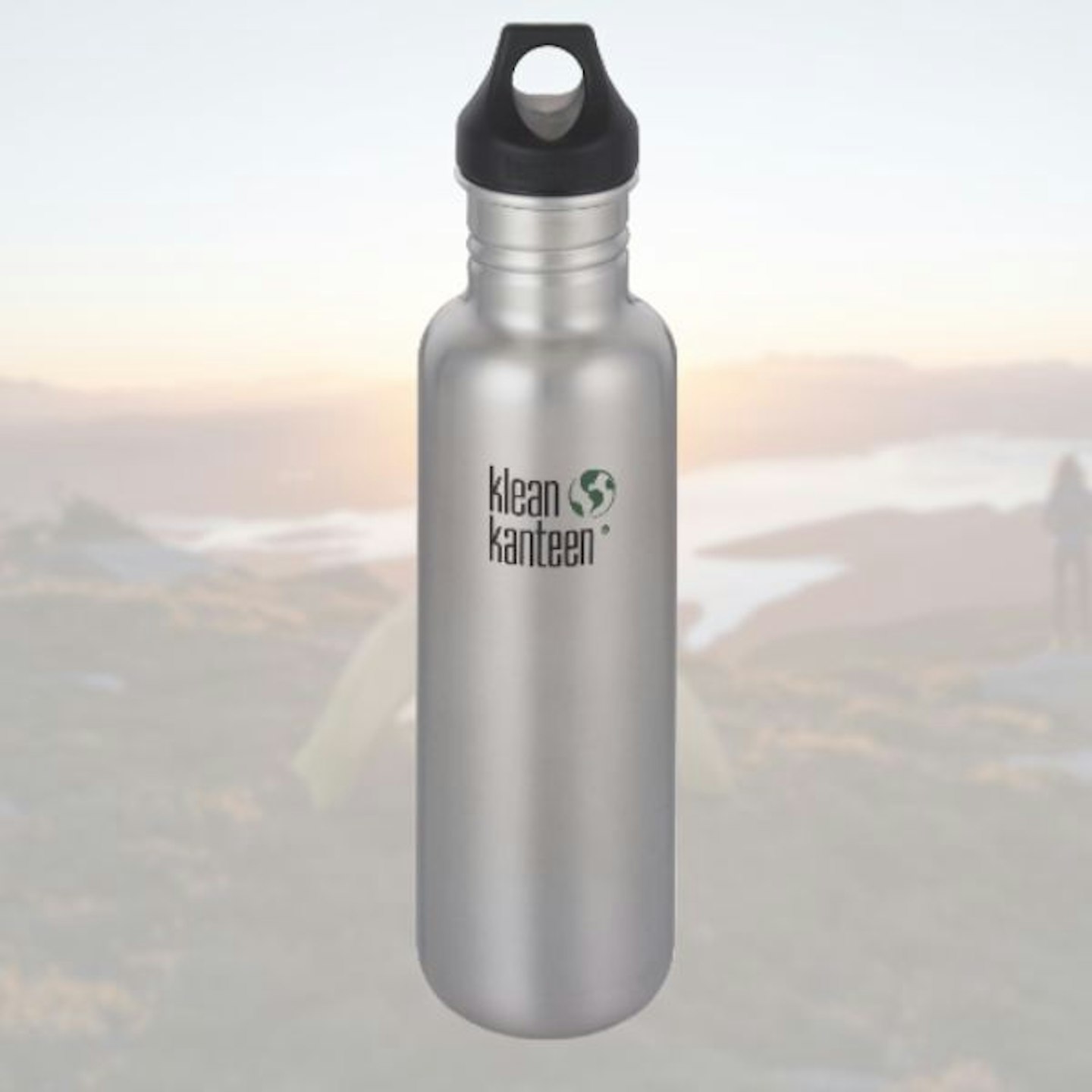
Perhaps it's a little heavier and less practical than a hydration bladder, but because the Klean Kanteen Classic is made from stainless steel, the water always tastes cool and fresh, like the mountain stream it hopefully came from.
The optional Sports Cap is easy to use on the go and, when mooching around in the summer, you can thread a loop of paracord through the lid, string it over your shoulder and go about your day.
In summary, it's a robust bottle that makes water taste good. We use it in conjunction with a water filter on walks with plenty of water points.
Pros
- Very robust
- Compatible with multiple caps
- No weird flavours
Cons
- Tad heavier than plastic and aluminium options
| Weight: | 213g (800ml) |
| Materials: | 18/8 food-grade stainless steel, polypropylene lid, BPA-free |
| Volumes: | 532ml, 800ml |
Best filter water bottle
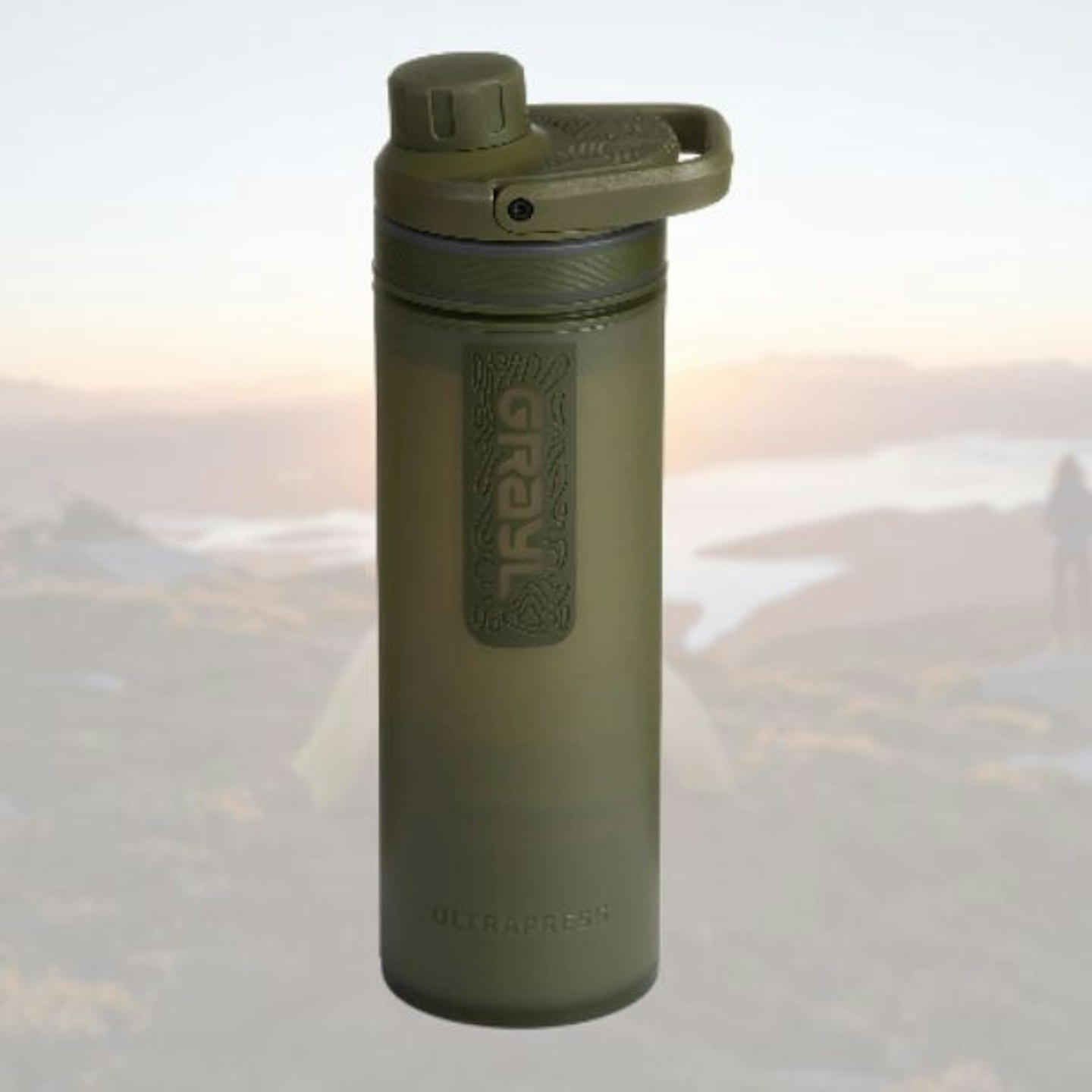
The Grayl 24oz GeoPress Purifier is a portable filter water bottle made to filter a huge array of nasty things that can be found lurking in river water and non-tap water both in the UK and across the world. If you want a filtering water bottle that gives you total peace of mind and is unbelievably easy to use, this is it.
The Grayl filter water bottles use its OnePress system, where you fill the bottle and then press it to engage the filtering system. The replaceable filter works for 300 cycles/150 litres and removes 99.9999% of viruses and bacteria; particulates (including microplastic); and many chemicals, pesticides, herbicides, and heavy metals.
The GeoPress weighs 350g and produces 710ml of clean water per press.
Pros
- Filters bacteria, viruses, pesticides, chemicals, sediments, etc.
- Quick to use in 8s press
- Filter not set into straw
- Water can be filtered and poured
- Stylish and durable bottle build
Cons
- Not the lightest bottle
- Slightly bulky
- More expensive that other options
| Weight: | 354g |
| Materials: | Polypropylene, food-grade silicone, TPE and ABS food-grade plastic, BPA-free |
| Volumes: | 500ml |
Best for functionality
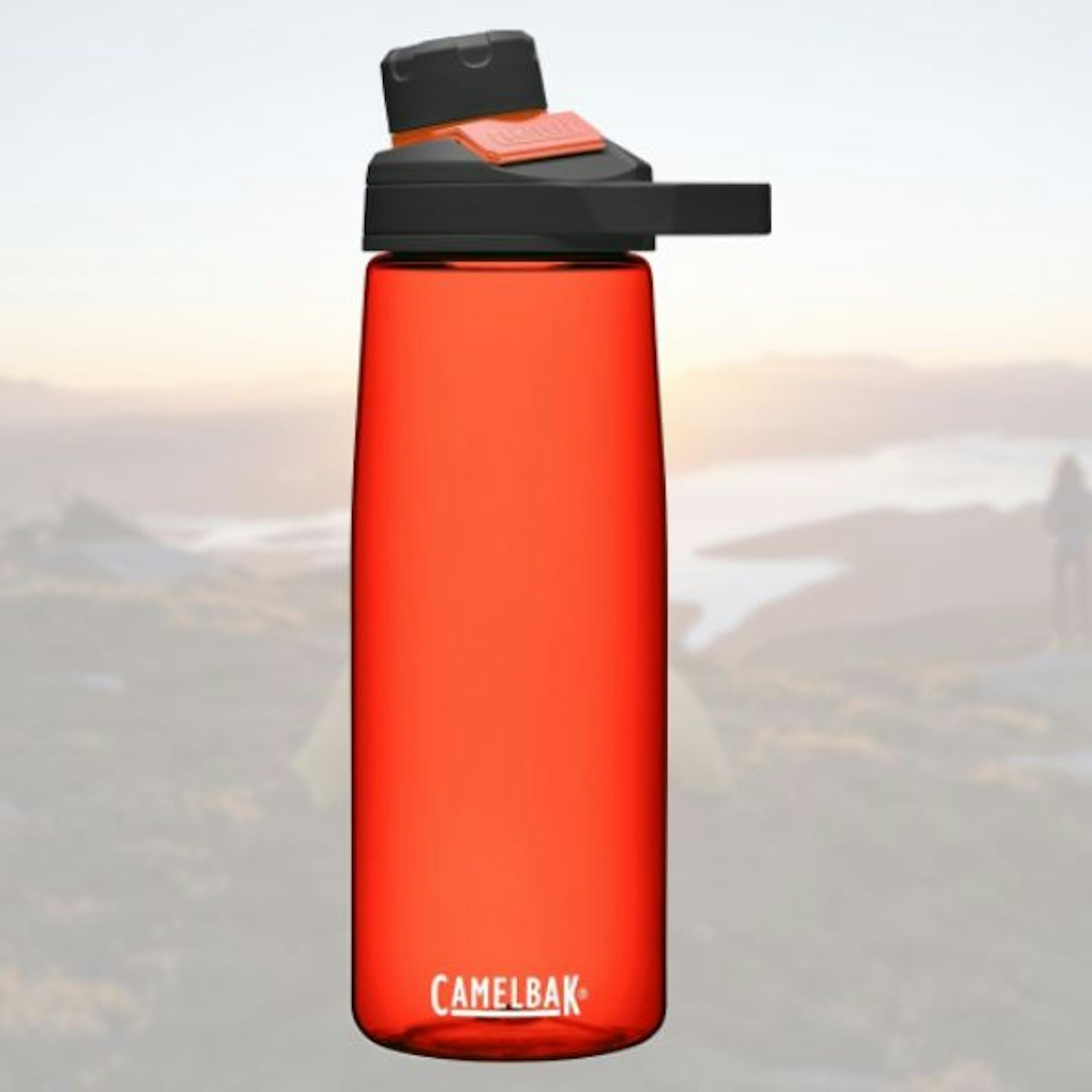
The Chute Mag drink bottle is a functional, durable, and lightweight. It also comes in four volumes (600ml, 750ml, 1000ml, 1400ml) plus a large range of colours.
We like the magnetic cap, which stays out of the way when you're drinking. The Tritan Renew plastic used is very tough, BPA, BPS and BPF-free, while also being 50% recycled.
The Chute Mag can also be used with Camelbak's Eddy+ and Carry caps.
Pros
- Excellent cap mechanism
- Uses recycled plastic
- Several volumes available
Cons
- Nalgene Tritan Wide Mouth Sustain is lighter
| Weight: | 169g (750ml) |
| Materials: | Tritan Renew plastic, 50% recycled, BPA-free |
| Volumes: | 600ml, 750ml, 1000ml, 1400ml |
Best for keeping drinks cold
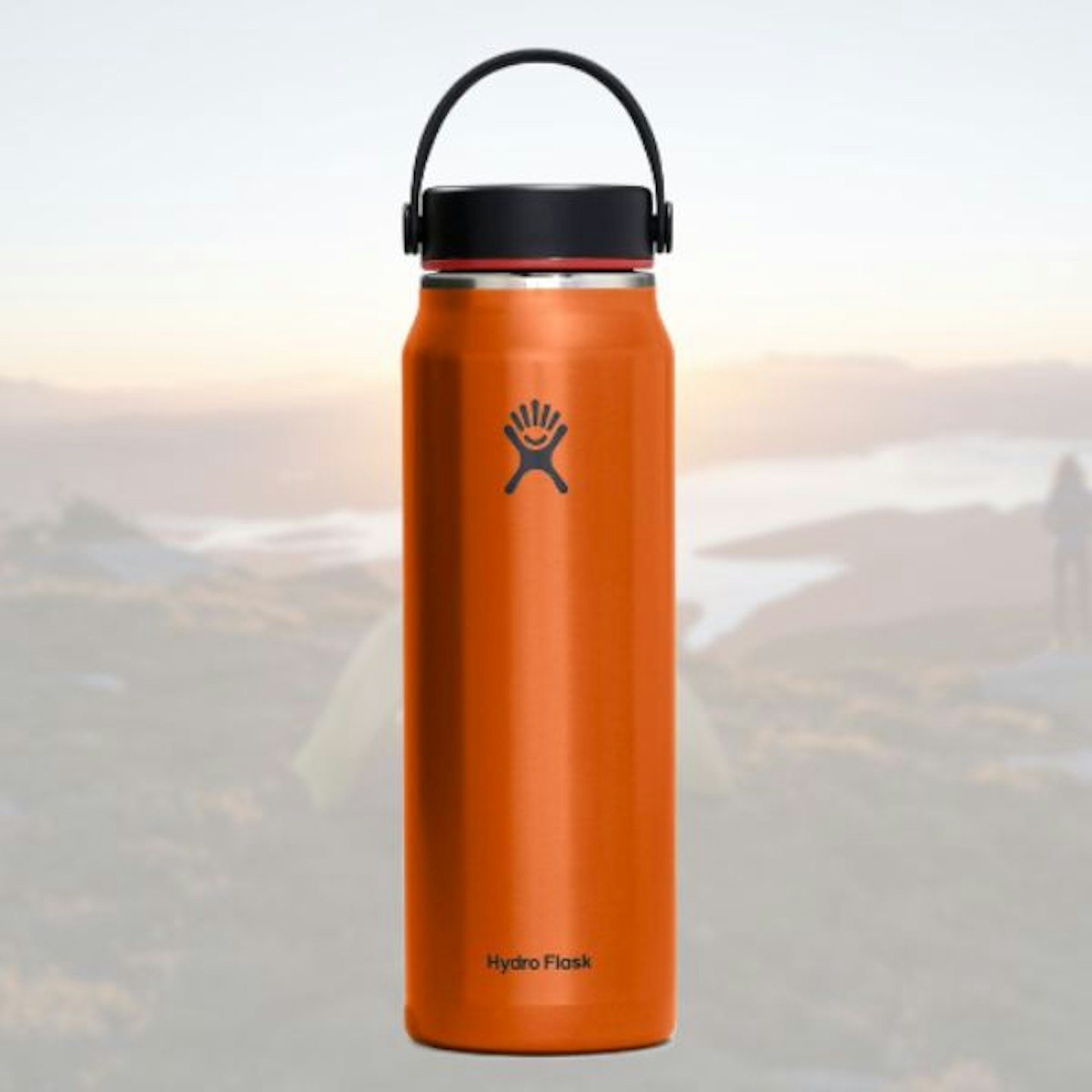
This is a lightweight double-walled stainless steel vacuum flask with a slim, compact design. The wide mouth makes for easy filling and cleaning, and the silicon grab handle means it is easy to pull from the side pocket of a rucksack.
Though it'll keep a brew warm for a couple of hours, it really comes into its own for keeping water ice-cold all day long, making it a top pick for summer hillwalking.
Despite being an insulated flask, it weighs little more than most normal water bottles. It's supplied with a Lightweight Flex Cap, which also features Honeycomb insulation, but it is also compatible with HydroFlask's Hydro Flip and Wide Mouth Straw lids.
Pros
- Keeps liquid cold all-day
- Lightweight for an insulated drink bottle
- Stainless steel doesn't affect flavour
Cons
- Heavier than non-insulated metal water bottles
| Weight: | 349g (946ml) |
| Materials: | 18/8 pro-grade stainless steel, BPA- and phthalate-free |
| Volumes: | 621ml, 710ml, 946ml, 1180ml |
Highly recommended
 LFTO
LFTOThis is quite a similar drink bottle to the Cambelbak but with a neat difference.
It has a lockable button lid that brings forth a strong trickle rather than a confident flow. It's ideal for using without touching the lid with your mouth.
You can still unscrew the lid and add ice cubes or whatever you need. You can unclip the lid to clean it properly too.
Pros
- Good value
- Lightweight
- Effective non screw cap
Cons
- Only one volume optino
| Weight: | 167g |
| Materials: | Tritan Renew plastic, 50% recycled, BPA-free |
| Volumes: | 720ml |
Best water bottle for kids
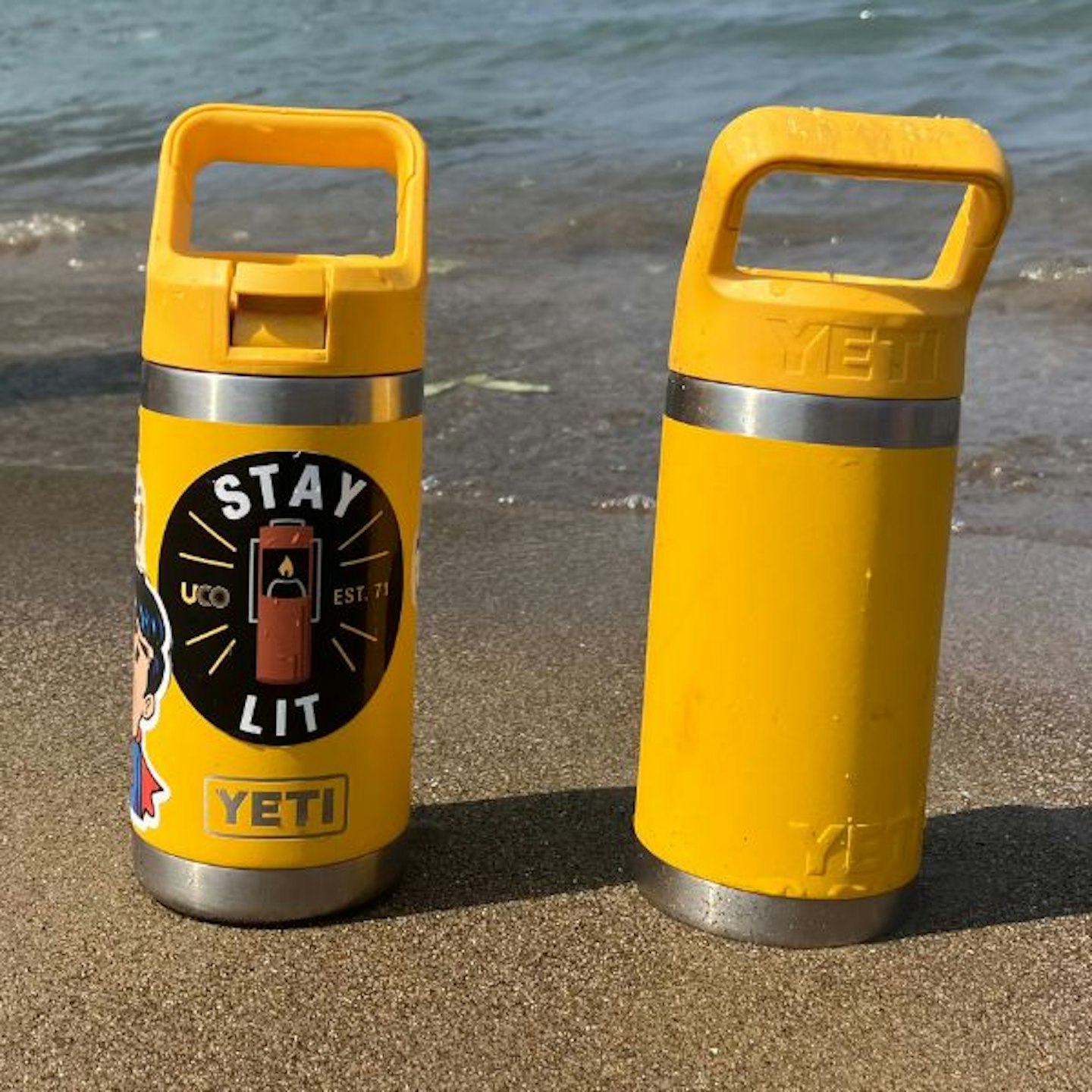 Live For The Outdoors
Live For The OutdoorsThere are many things that make the Yeti Rambler JR a great water bottle for adventurous kids, and the first is that it feels virtually indestructible. Anyone who’s hiked or explored with children knows that they’re masters at destroying water bottles through any means necessary, but from our experience testing the Rambler over the past couple of years they’ve met their match.
The cap has a pop-up straw which is totally leak-resistant so can be stuffed in a pack with no concerns. Plus that pop-up straw is so solid that even the most ferocious little teeth won’t manage to chew through it. And trust us, our testers have tried.
The other main wins are the double-wall vacuum insulation that keeps drinks chilled even when temperatures are soaring (our testing photo above was taken on a Mediterranean beach), and the stainless steel armour that means the bottles can cope with being bashed against rocks without any structural damage.
Probably the only slight gripe is that, because of the thick insulated walls, the 354ml capacity probably doesn’t hold enough water for very long walks. But it’s a small price to pay for this kind of performance.
Pros
- Insulation keeps drinks chilled
- Feels indestructible
- Pop-up straw never leaks
- Available in lots of colours
- Dishwasher safe
Cons
- Small capacity at 354ml
| Weight: | 500g |
| Materials: | 18/8 stainless steel walls, plastic cap |
| Volumes: | 345ml |
How to buy the best drink bottle
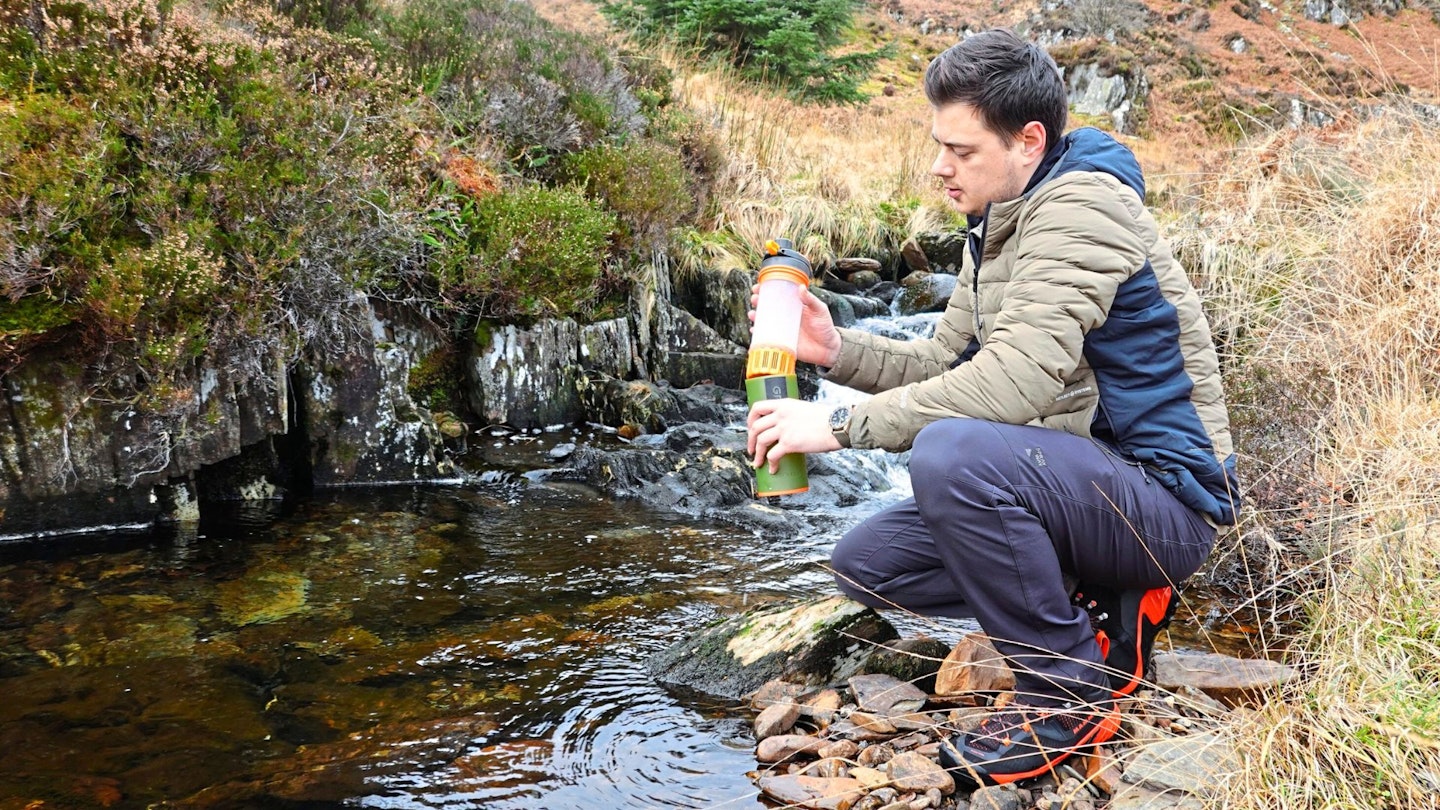
Volume: Whether to go big or small depends on a few things. One is the length and intensity of your hike. For a leisurely two-hour walk you only need a smaller bottle. For longer or harder outings, you need more – you need at least two litres of water if you're bagging a UK mountain peak. But, that doesn't necessarily mean you need a large bottle if you've got access to water sources and a water filter, for example.
Weight: Flexy drink bottles are generally the lightest and most compact design. Plastic and aluminium drink bottles can come a close second, followed by tough but heavier stainless steel.
Material: Plastic and aluminium are great for keeping weight down, and stainless steel for durability. It's also important to note, stainless steel is best for not storing or releasing any funny flavours.
Cap: Loop caps are handy for attaching your bottle to a pack or slinging over your shoulder with the use of some cord. Wide-mouth bottles are easy to fill, clean, and add ice into. Flip-top or sports caps are the easiest to drink from.
Price: Because you can get very good drink bottles for very reasonable prices, the real key is knowing which drink bottles are worth your time and which aren't. That's where this guide comes in very handy.
Sustainability: Metal non-insulated drink bottles offer the greatest durability and therefore score high on the sustainability front. Those few that are made from recycled metal are even better. Plastic ones can be very durable too, if you get the right one. If you do opt for a plastic drink bottle, make sure it is at least partially made from recycled plastic.
Filters: Drink bottles that have built-in water filters are very convenient and handy to take to remote places. However, separate water filters can be very compact and are great for pairing with a standard drink bottle.
How we tested
Testing water bottles is perhaps a more rigorous process than you'd first imagine. Our experienced gear testers do more than just fill up a bottle and take a swig.
We consider not just how capacious a water bottle is but what it's volume-to-weight ratio is. We look at how easy they are to carry; durability; how easy they are to clean; and important extras such as a filter.
Annually, we create the ultimate shortlist of the very best gear in our Gear of the Year Awards.
Get half-price digital OS Maps. Trail and Country Walking magazine members get 50% off an annual subscription to OS Maps for 12 months. Find out more here.
Don't forget to subscribe to the Live For The Outdoors newsletter to get expert advice and outdoor inspiration delivered to you inbox!
Chris Williams is a Digital Content Writer for Live For The Outdoors. He trained as a journalist in New Zealand and has been working on Live For The Outdoors since 2021.
